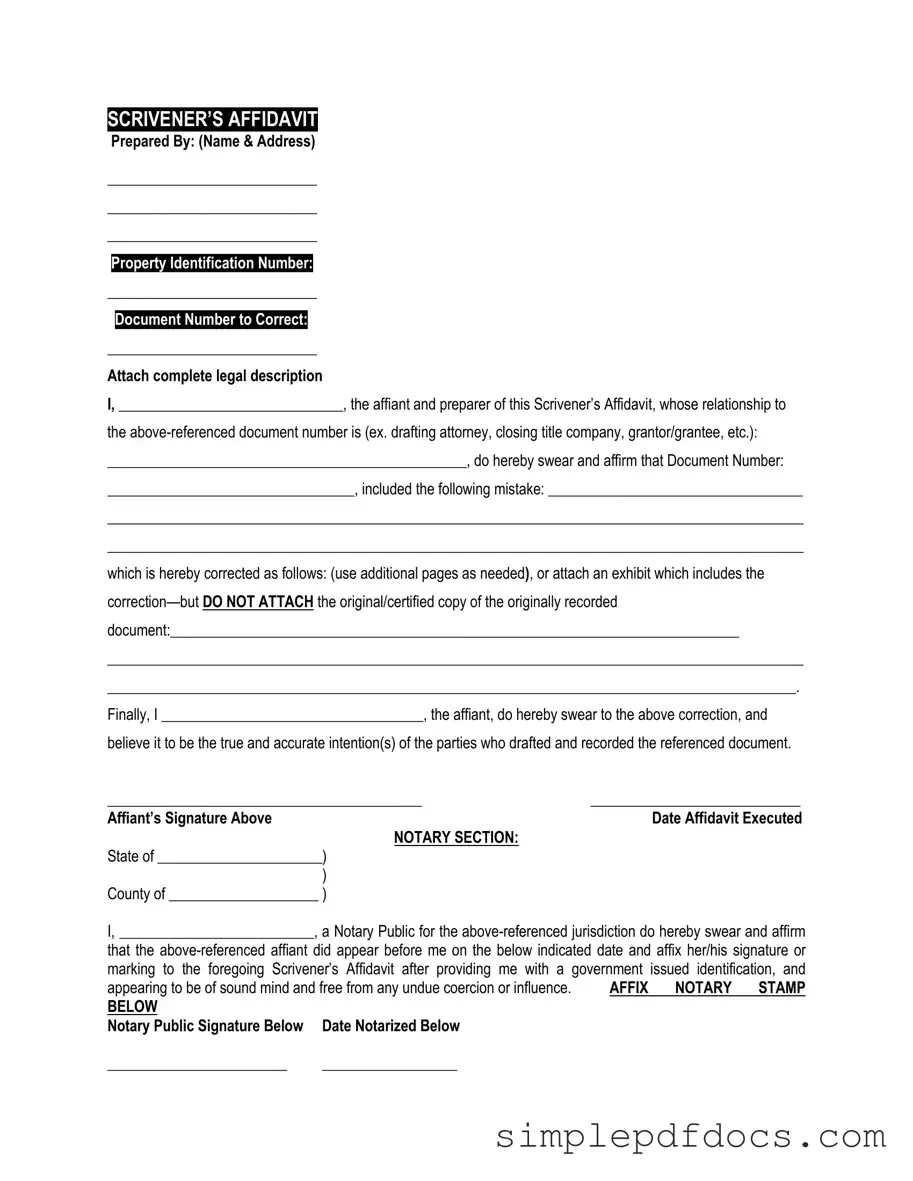Fill Your Scrivener's Affidavit Form
The Scrivener's Affidavit is a legal document used to clarify and correct errors in previously executed documents. This form is often utilized when discrepancies arise in property records, contracts, or other legal instruments. Understanding its purpose and proper use is essential for ensuring accurate and reliable documentation.
Get Document Here
